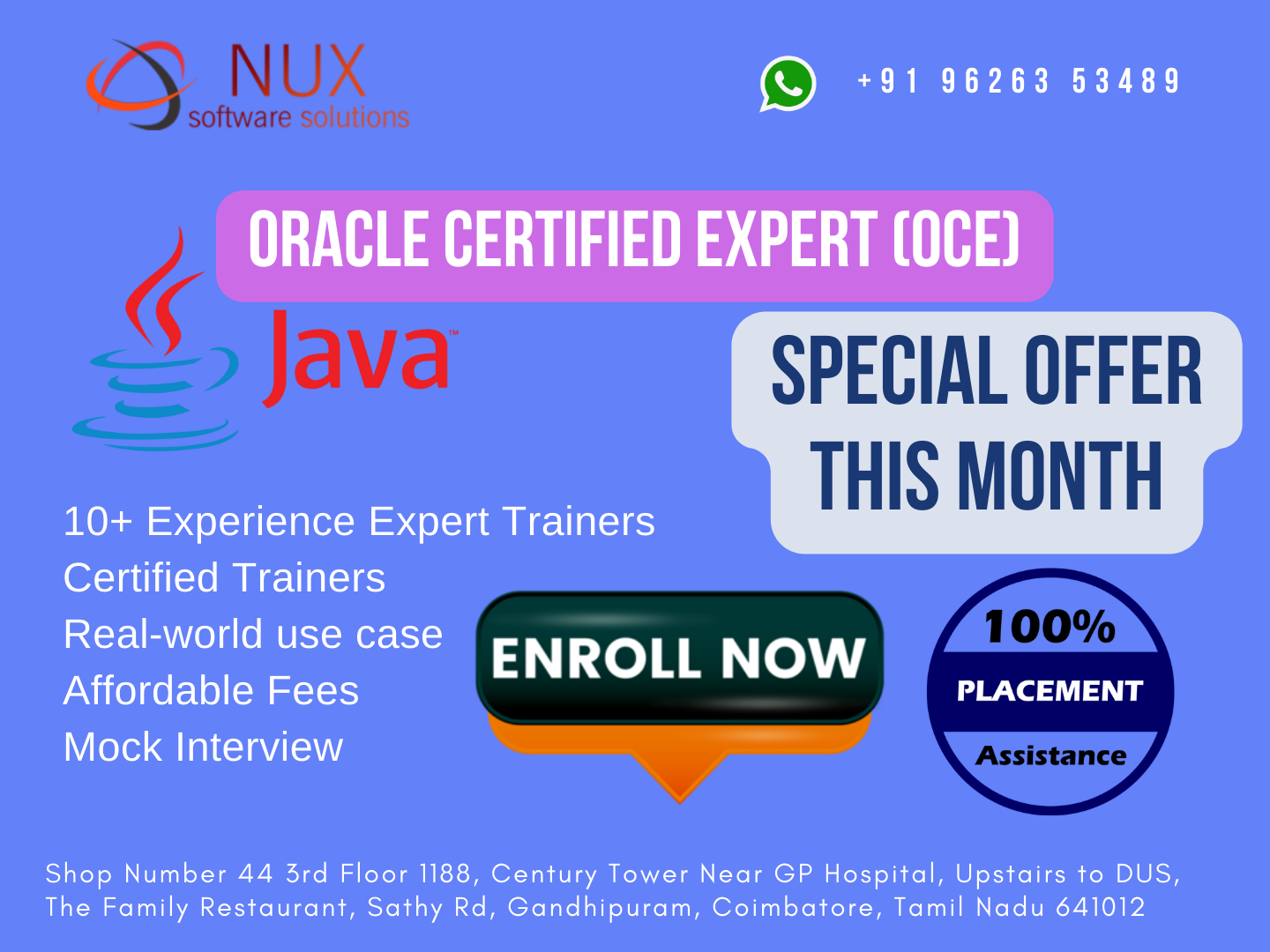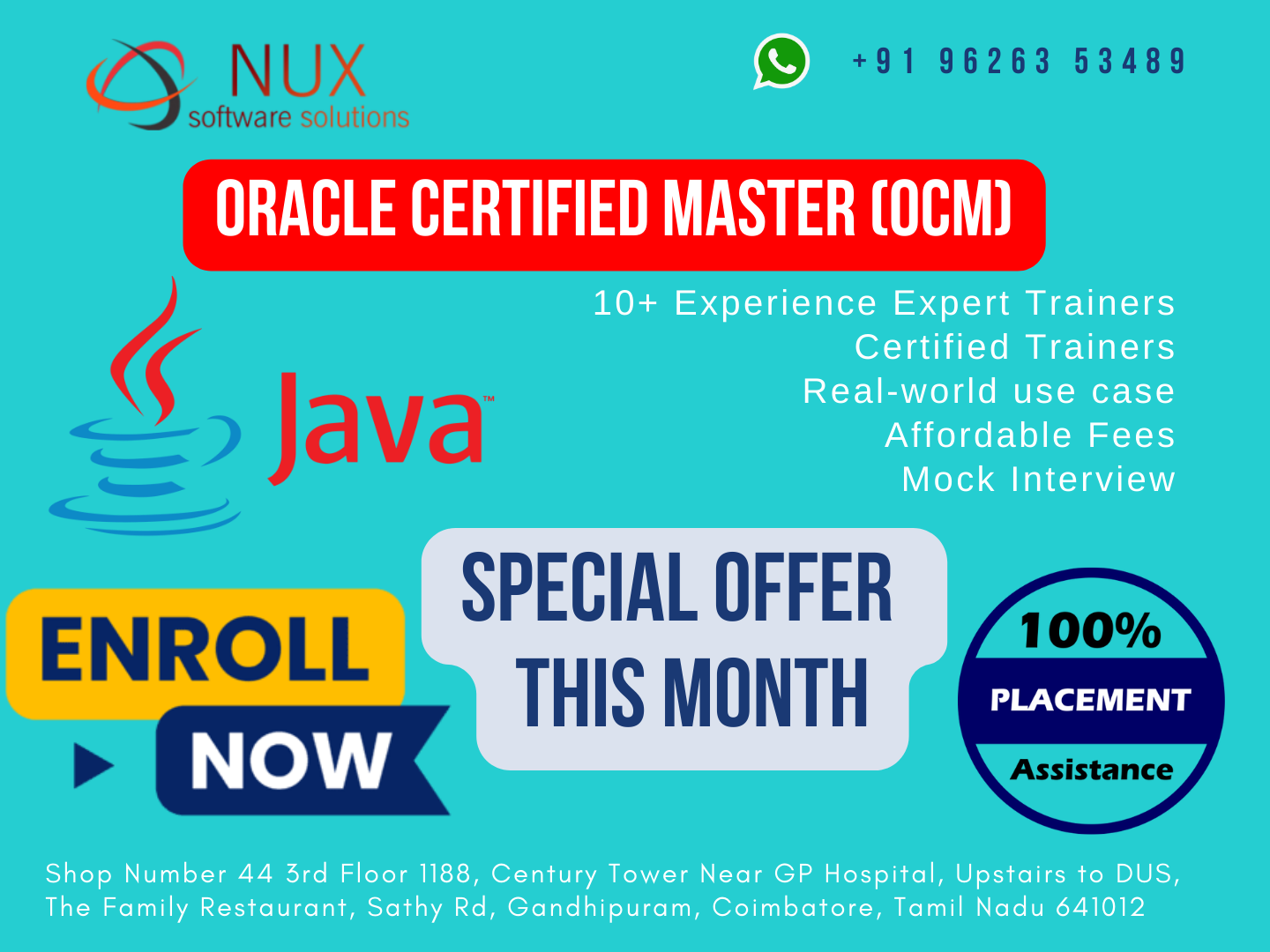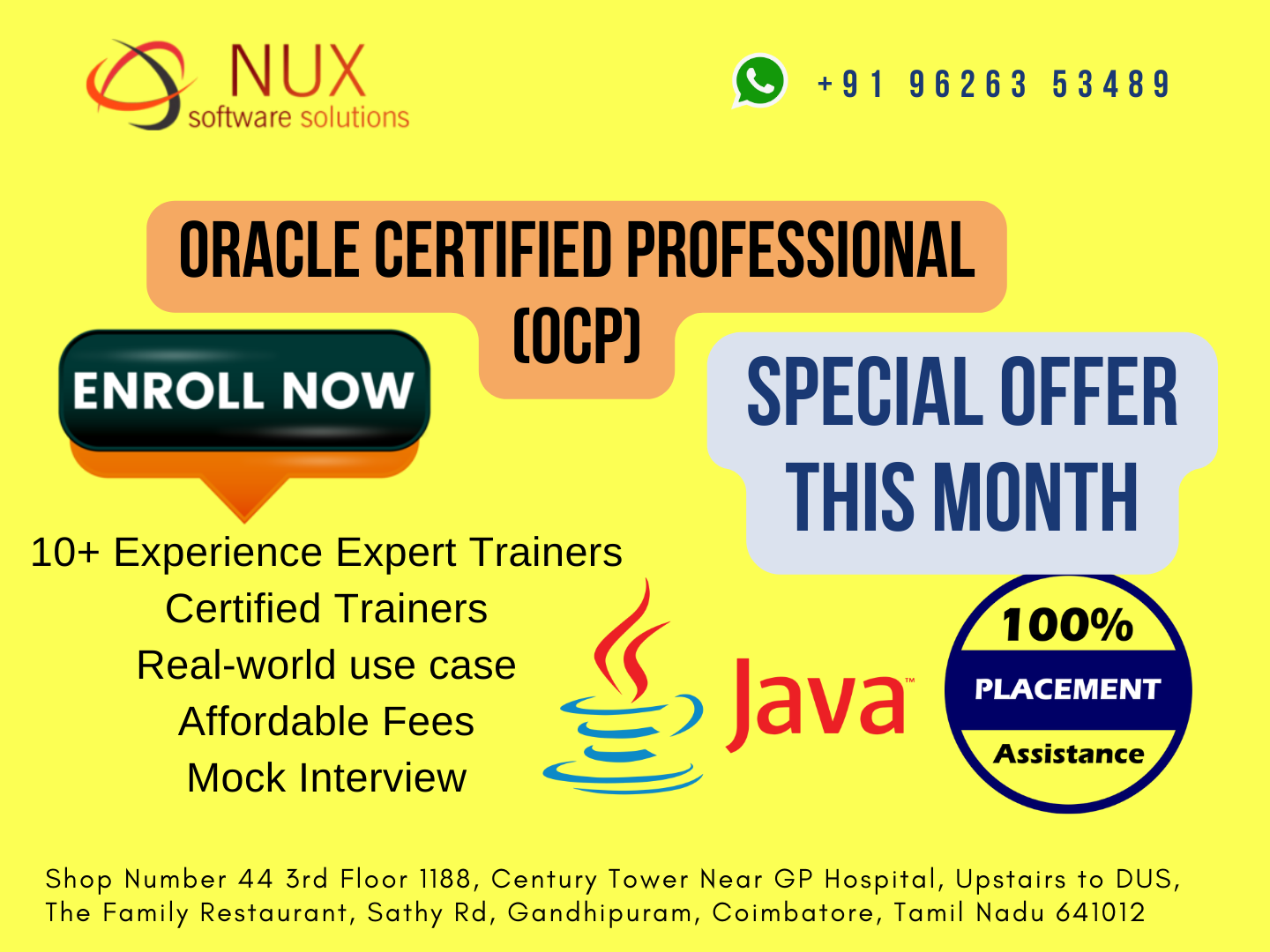Oracle Certified Expert (OCE)


Best Oracle Certified Expert (OCE) training courses classes deliver by Nux software solutions in coimbatore. Nux software solutions in coimbatore has excellent and advanced training programs that will give you better performance & hands on experience. Our industry’s expert trainers offer a wide range of skills and experience in their graded areas.
The Training center environment is too good for professional, individual, corporate, live project training and industrial training. Labs infrastructure is advanced, well managed and you can access LAB 24X7 from anywhere. Training center has international expert trainers and they have excellent knowledge, real time industry experience.
Our Training programs combine with several innovative learning methods and delivery models. We understand your requirement and it will give you 100 percent growth for your career and provide the cost effective training programs and also work with flexibility for the trainees.
Oracle Certified Expert (OCE) certification is the next level up from OCA which helps you to enhance your knowledge in either OCA or OCP. It is an expert-level credential designed to manage a large scale database and enhances the knowledge regarding the concepts and architecture relating to database, backup, and recovery procedures using RMAN, Enterprise Manager, and various kinds of flashback technologies, instance configuration, and job scheduling.
Course Syllabus
Module
Data
- Limit the rows that are retrieved by a query
- Sort the rows that are retrieved by a query
- Use substitution variables
- Use the SQL row limiting clause
- Create queries using the PIVOT and UNPIVOT clause
- Use pattern matching to recognize patterns across multiple rows in a table
Using Single-Row Functions to Customize Output
- Describe various types of functions that are available in SQL
- Use character, number, and date and analytical (PERCENTILE_CONT, STDDEV, LAG, LEAD) functions in SELECT statements
- Use conversion functions
Reporting Aggregated Data Using the Group Functions
- Identify the available group functions
- Use group functions
- Group data by using the GROUP BY clause
- Include or exclude grouped rows by using the HAVING clause
Displaying Data from Multiple Tables
- Use equijoins and nonequijoins
- Use a self-join
- Use outer joins
- Generate a Cartesian product of all rows from two or more tables
- Use the cross_outer_apply_clause
Using Subqueries to Solve Queries
- Use subqueries
- List the types of subqueries
- Use single-row and multiple-row subqueries
-Create a lateral inline view in a query
Using the Set Operators
- Explain set operators
- Use a set operator to combine multiple queries into a single query
- Control the order of rows returned
Manipulating Data
- Describe the DML statements
- Insert rows into a table
- Update rows in a table
- Delete rows from a table
- Control transactions
Using DDL Statements to Create and Manage Tables
- Categorize the main database objects
- Review the table structure
- Describe the data types that are available for columns
- Create tables
- Create constraints for tables
-Describe how schema objects work
- Truncate tables, and recursively truncate child tables
- Use 12c enhancements to the DEFAULT clause, invisible columns, virtual columns and identity columns in table creation/alteration
Creating Other Schema Objects
- Create simple and complex views with visible/invisible columns
- Retrieve data from views
- Create, maintain and use sequences
- Create private and public synonyms
Managing Objects with Data Dictionary Views
- Query various data dictionary views
Controlling User Access
- Differentiate system privileges from object privileges
- Grant privileges on tables and on a user
- View privileges in the data dictionary
- Grant roles
- Distinguish between privileges and roles
Managing Schema Objects
- Manage constraints
- Create and maintain indexes including invisible indexes and multiple indexes on the same columns
- Create indexes using the CREATE TABLE statement
- Create function-based indexes
- Drop columns and set column UNUSED
- Perform flashback operations
- Create and use external tables
Manipulating Large Data Sets
- Manipulate data using subqueries
- Describe the features of multitable INSERTs
- Use multitable inserts
- Unconditional INSERT
- Pivoting INSERT
- Conditional ALL INSERT
- Conditional FIRST INSERT
- Merge rows in a table
- Track the changes to data over a period of time
- Use explicit default values in INSERT and UPDATE statements
Generating Reports by Grouping Related Data
- Use the ROLLUP operation to produce subtotal values
- Use the CUBE operation to produce crosstabulation values
- Use the GROUPING function to identify the row values created by ROLLUP or CUBE
- Use GROUPING SETS to produce a single result set
Managing Data in Different Time Zones Use various datetime functions
- TZ_OFFSET
- FROM_TZ
- TO_TIMESTAMP
- TO_TIMESTAMP_TZ
- TO_YMINTERVAL
- TO_DSINTERVAL
- CURRENT_DATE
- CURRENT_TIMESTAMP
- LOCALTIMESTAMP
- DBTIMEZONE
- SESSIONTIMEZONE
- EXTRACT
Retrieving Data Using Subqueries
- Use multiple-column subqueries
- Use scalar subqueries
- Use correlated subqueries
- Update and delete rows using correlated subqueries
- Use the EXISTS and NOT EXISTS operators
- Use the WITH clause
Hierarchical Retrieval
- Interpret the concept of a hierarchical query
- Create a tree-structured report
- Format hierarchical data
- Exclude branches from the tree structure
Regular Expression Support
- Use meta Characters
- Use regular expression functions to search, match and replace
- Use replacing patterns
- Use regular expressions and check constraints


